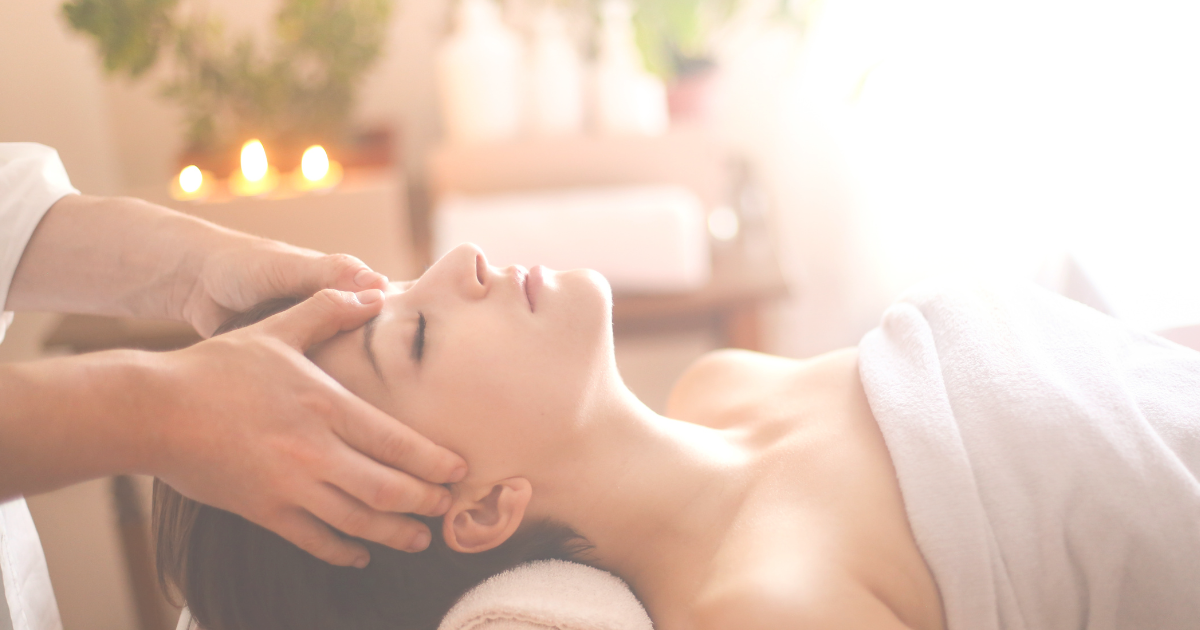さとう式リンパケアとは?
さとう式でいう「リンパ」とは細胞間を満たしている体液のこと
さとう式リンパケアは小顔、リフトアップ、スタイルアップ
そして肩こりや腰痛改善など嬉しい効果がぎゅっと詰まった健康美容法です。
「リンパ」と聞くとリンパ管の中を流れる「リンパ」をイメージすることが多いですが、
さとう式リンパケアでいう「リンパ」とは、
血管から染み出して細胞周辺を満たしている体液のことを指し
これを「リンパ間質液」と呼んでいます。
「リンパ間質液」は身体にとって必要な「酸素や栄養」を細胞に送り届け、
細胞から出た「二酸化炭素や老廃物」を排出するという大切な役割を担っています。
そのため、「リンパ間質液」が体内をしっかり循環していることが大切です。
さとう式リンパケアでは独自の理論に基づいて、「リンパ間質液」が循環する体へとケアしていきます。
その理論とは、「体は腔でできている」「支持筋は屈筋」そして「筋肉を緩める」の3つです。
さとう式リンパケア 3つの理論
①「体は腔でできている」
私たちのからだは口周りの口腔、胸周りの胸腔、お腹周りの腹腔、この3つの「腔」(からだの空洞)で成り立っています。
この3つの「腔」が体の内側から正しく広がっていることが重要です。
もしこの「腔」がつぶれてしまうと、からだのバランスが崩れる原因になります。
からだに余分な負担がかかり、さまざまな機能低下を招いてしまうのです。
「腔」が整った姿勢になると、リンパの循環や内臓機能、脂肪代謝などがアップします。
さとう式はこの「腔」を広げることで、からだをより良い状態へと導きます。
②「支持筋は屈筋」
「支持筋」とは人の姿勢を保ってくれている筋肉のことです。
からだを動かす主な筋肉は「伸筋」と「屈筋」の2種類があり、さとう式では「支持筋」は「屈筋」と考えています。
人は背骨で立っているのではなく、「屈筋」が上半身の前側、下半身の後ろ側でつっかい棒のようになって体を支えています。
※「屈筋」と「伸筋」のバランスが大切
例)「胸の筋肉(屈筋)」がギュッと硬く縮んでしまう→背中側にある「伸筋」がグーッと前に引っ張られる。
→背中の筋肉が硬くなったりねじれる。→肩こりや腰痛原因に。
→緊張しやすい「屈筋」を緩めることで筋肉が元の正しい場所に戻りバランスが取れていきます。
③「筋肉を緩める」
ふわっと触れて揺らしてあげる、たったそれだけで筋肉は柔らかくなっていきます。
筋肉は緩むことで本来のポンプ機能を取り戻し、全身の「リンパ間質液」の流れがよくなっていきます。
従来のマッサージなどで押したり揉んだりすると筋肉は筋繊維が傷つき硬くなってしまいます。
そうすると筋肉本来のポンプとしての役割が果たせないため
「リンパ間質液」の流れが滞ってしまい、かえって痛みや不調につながります。
さとう式リンパケアは
筋肉を「押さない、揉まない、引っ張らない」ケアで、からだをより良い状態へと導いていきます。
お肌は美しく、内側からのハリを取り戻し
肩こり腰痛などの痛みを改善、むくみなどに効果を発揮します。
優しく触れて深呼吸。
そこに意識を向けてみてください。
さとう式リンパケアは頑張らなくていいんです。
自分を大切に扱うことで、からだと心がふわっと柔らかくなります。
さとう式リンパケアはからだに優しくすればするほど美しさと健康に効果を発揮するケアなのです。
Sato-style lymphatic care is a health and beauty method that is packed with wonderful effects such as a smaller face, lifting, improving your figure, and improving shoulder stiffness and back pain.
When we hear “lymph,” we often imagine “lymph” flowing through lymphatic vessels, but in Sato-style lymphatic care, “lymph” refers to the bodily fluid that seeps out of blood vessels and fills the area around cells, which we call “lymph interstitial fluid.”
“Lymph interstitial fluid” plays an important role in delivering “oxygen and nutrients” necessary for the body to cells, and in expelling “carbon dioxide and waste products” from cells.
Therefore, it is important that “lymph interstitial fluid” circulates properly within the body.
Sato-style lymphatic care is based on a unique theory and provides care for the body to circulate “lymph interstitial fluid.”
The theory is that “the body is made up of cavities,” “the supporting muscles are flexors,” and “relaxing muscles.”
① “The body is made up of cavities”
Our body is made up of three “cavities” (body cavities): the oral cavity around the mouth, the thoracic cavity around the chest, and the abdominal cavity around the stomach.
It is important that these three “cavities” are properly expanded from the inside of the body.
If these “cavities” are collapsed, it will cause the body to lose its balance.
Extra strain will be placed on the body, leading to various functional declines.
When the “cavities” are in a good posture, lymph circulation, visceral function, fat metabolism, etc. will improve.
The Sato Method leads the body to a better condition by expanding these “cavities”.
② “Flexors are supporting muscles”
“Supporting muscles” are the muscles that maintain a person’s posture.
There are two main types of muscles that move the body: “extensors” and “flexors”, and the Sato Method considers “supporting muscles” to be “flexors”.
People do not stand on their spines; rather, “flexors” act like braces on the front of the upper body and the back of the lower body to support the body.
*The balance between flexors and extensors is important.
Example) When the chest muscles (flexors) are tightly contracted, the extensors on the back are pulled forward.
The back muscles become stiff and twisted.
This can lead to stiff shoulders and back pain.
By relaxing the flexors, which tend to tense up, the muscles return to their original correct position and balance is restored.
③ Relax the muscles
Just by gently touching and rocking the muscles, the muscles become softer.
By relaxing the muscles, they regain their original pumping function and the flow of lymphatic interstitial fluid throughout the body improves.
When muscles are pressed or kneaded in a traditional massage, the muscle fibers are damaged and the muscles become stiff.
This prevents the muscles from performing their original role as a pump,
which can lead to a blockage in the flow of lymphatic interstitial fluid, which can lead to pain and discomfort.
Sato-style lymphatic care
is a care that does not “push, knead, or pull” muscles, leading to a better body condition.
It makes your skin beautiful and restores firmness from the inside, and is effective in improving pain such as stiff shoulders and back pain, and reducing swelling.
Touch gently and take a deep breath.
Try to focus on that.
You don’t have to try hard with Sato-style lymphatic care.
Treating yourself with care will make your body and mind soften.
The more gentle you are with Sato-style lymphatic care, the more effective it is for your beauty and health.
佐藤式淋巴護理是一種具有小臉、提拉、改善身材、改善肩部僵硬、背痛等奇妙效果的健康美容方法。
當我們聽到「淋巴」時,我們通常會想像「淋巴」流經淋巴管,但在佐藤式淋巴護理中,「淋巴」指的是從血管滲出並充滿細胞周圍區域的體液,我們稱之為為“淋巴間質液。”
「淋巴間質液」在向細胞輸送身體所需的「氧氣和營養物質」以及將「二氧化碳和廢物」排出細胞方面發揮著重要作用。
因此,「淋巴間質液」在體內正確循環非常重要。
佐藤式淋巴護理以獨特的理論為基礎,透過對身體進行徹底的「淋巴間質液」護理。
該理論認為「身體由空腔組成」、「支撐肌肉是屈肌」和「放鬆肌肉」。
①“身體是由空洞組成的”
我們的身體由三個「腔體」(體腔)組成:口腔周圍的口腔、胸部周圍的胸腔和胃周圍的腹腔。
重要的是這三個「空腔」從身體內部適當地擴展。
如果這些「空腔」塌陷,就會導致身體失去平衡。
會給身體帶來額外的壓力,導致各種功能下降。
當「腔」處於良好的姿勢時,淋巴循環、內臟功能、脂肪代謝等都會改善。
佐藤方法透過擴大這些「空腔」使身體達到更好的狀態。
②“屈肌是支撐肌肉”
「支撐肌」是維持人姿勢的肌肉。
移動身體的肌肉主要有兩種:“伸肌”和“屈肌”,佐藤方法將“支撐肌”視為“屈肌”。
人們不是用脊椎站立,而是用「屈肌」像支架一樣作用在上半身的前部和下半身的後部來支撐身體。
*屈肌和伸肌之間的平衡很重要。
例)當胸部肌肉(屈肌)緊密收縮時,背部的伸肌就會向前拉。
背部肌肉變得僵硬、扭曲。
這會導致肩膀僵硬和背部疼痛。
透過放鬆趨於緊張的屈肌,肌肉恢復到原來的正確位置並恢復平衡。
③ 放鬆肌肉
只要輕輕地觸摸和搖晃肌肉,肌肉就會變得更柔軟。
透過放鬆肌肉,它們恢復原來的幫浦功能,全身淋巴間質液的流動也得到改善。
當傳統按摩中按壓或揉捏肌肉時,肌肉纖維會受損,肌肉會變得僵硬。
這會阻止肌肉發揮其最初的泵作用,
這會導致淋巴間質液流動受阻,導致疼痛和不適。
佐藤式淋巴護理
是一種不「推、揉或拉」肌肉的護理,可帶來更好的身體狀況。
讓肌膚美麗,從內部恢復緊緻,對改善肩膀僵硬、背痛等疼痛、消腫有效果。
輕輕觸摸並深呼吸。
嘗試專注於此。
您不必費力嘗試佐藤式的淋巴護理。
細心對待自己會讓你的身體和心靈變得柔軟。
佐藤式淋巴護理越溫和,對您的美麗和健康就越有效。

